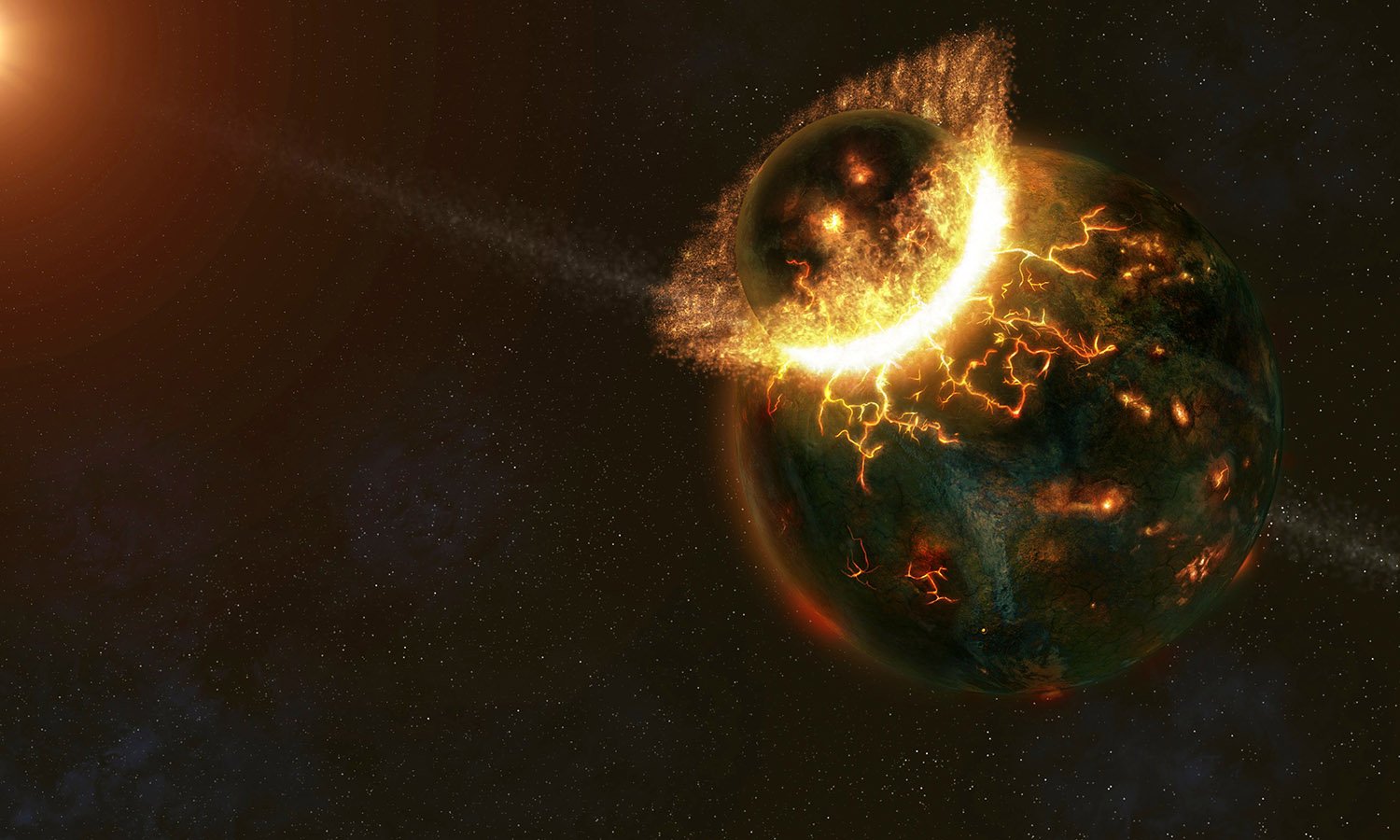The Moon is thought to have formed after a planetary embryo hit the Earth ~4.5 billion years ago. This produced a phenomenom that has never been observed by any human being. This so called ‘giant impact’ generated a lot of heat and some matter was ejected into space to form a large cloud of vapor and magma that surrounded the Earth. Ultimately, this produced a small planetary object, the Moon, that started orbiting around the Earth while slowly moving away from it.
The samples brought back during the Apollo missions have been used by scientists to reconstruct the history of the ‘giant Impact’. The Moon has a chemical composition that closely approaches that of the Earth. However, there are a few differences that can be used to gain insight into how the Moon formed. The main difference is that the Moon has a lower amount of elements that are called moderately volatile because they tend to be enriched in the vapor compared with the magma. In this study, we used the isotopes of tin, an element that has a lower concentration in the Moon than in the Earth.
[rand_post]
The isotopes of tin provide remarkable fingerprints about the conditions of Moon formation. First, the new results indicate that the loss of volatile elements such as tin happened when the Moon was at the stage of a vapor cloud containing droplets of magma at a temperature of 2500 K approximately. This was after the cloud had cooled down from the very hot temperature it had right after the impact. It had been suggested in previous studies that this loss had taken place after the Moon had formed and was a glowing molten satellite in a stage called a magma ocean. Tin isotopes are not consistent with this story as the predicted abundance of tin isotopes for a magma ocean would not fit the observations. The new results thus offer a different perspective on how the young Moon evolved.
